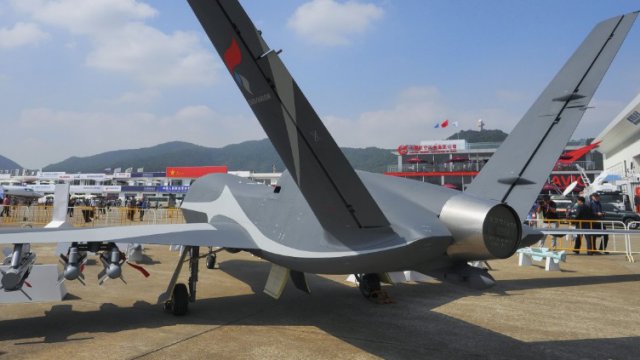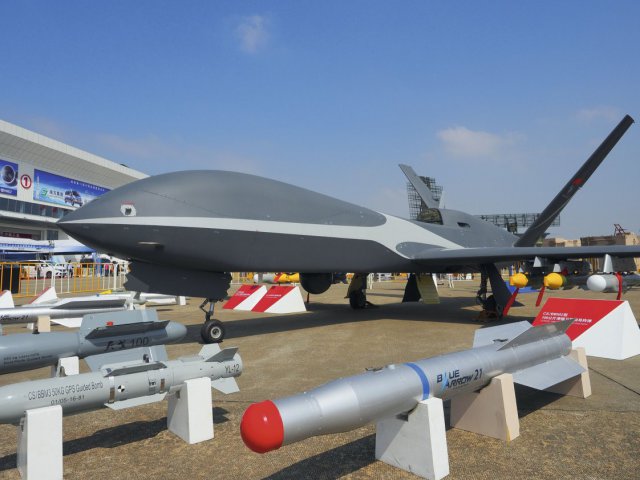
The Aviation Industry Corporation of China (AVIC) unveiled the Cloud Shadow, a turbojet-powered, medium/high-altitude long-endurance unmanned aerial vehicle (UAV) at the Airshow China 2016 exposition, which was held in the southern city of Zhuhai from 1 to 6 November.
Developed by AVIC’s Chengdu Aircraft Corporation (CAC) subsidiary, the export-oriented Cloud Shadow is available in two configurations: the armed reconnaissance model, which has a maximum speed of 550 km/h but a payload capacity of 400 kg, and six underwing hardpoints for external stores; and a dedicated intelligence, surveillance, and reconnaissance (ISR) platform, which features a higher maximum speed of 620 km/h but can only carry a 200 kg payload comprising communication, and radar surveillance equipment, or high-definition photo-reconnaissance systems.
The ISR and armed reconnaissance variants are similarly equipped with a synthetic aperture radar (SAR) for improved moving target tracking performance, although only the latter carries a belly-mounted electro-optical/infrared (EO/IR) sensor turret for target designation and post-strike battle-damage assessment (BDA).

Both platforms share the same 9 m long and 3.66 m tall airframe that appears to draw some degree of inspiration from the US-made General Atomics Aeronautical Systems Predator C Avenger platform, with a mid-mounted wing design that spans 17.8 m and features a forward-swept trailing edge on the inboard section tapering to a constant chord outer section, although the Cloud Shadow’s wings are swept back only about 10° compared with the Avenger’s more pronounced 17° sweep. However, unlike Avenger the Cloud Shadow is not equipped with an internal stores bay.
The Cloud Shadow is also equipped with V tail surfaces and a dorsally mounted pod for its propulsion system. This was revealed by AVIC to be the WP11C turbojet engine, a “modernised and refined” version of the original WP11 system developed by the Beijing University of Aeronautics and Astronautics (BUAA) for unmanned aircraft applications.
Photos: IHS/Kelvin Wong
Source: IHS Jane’s 360
